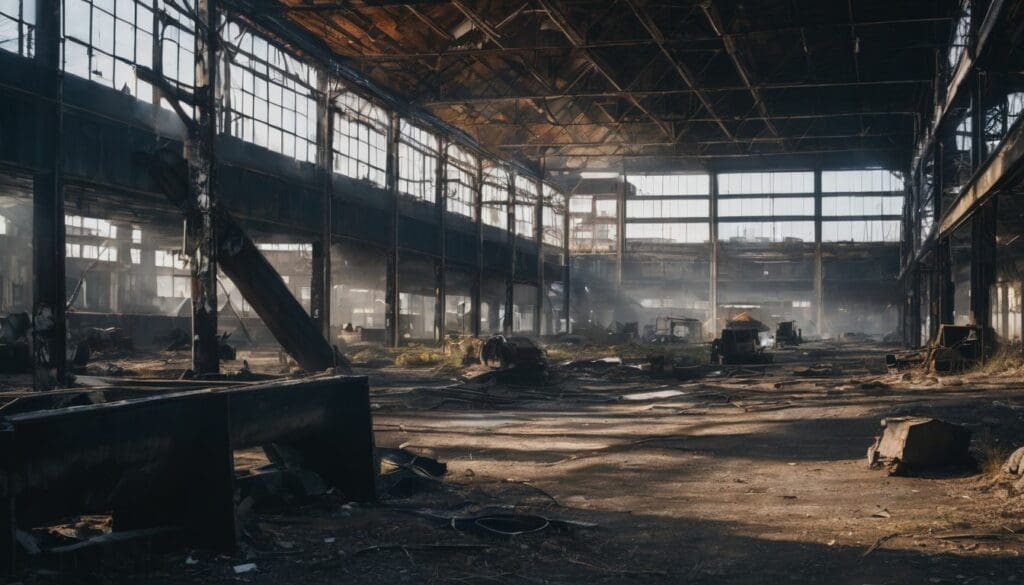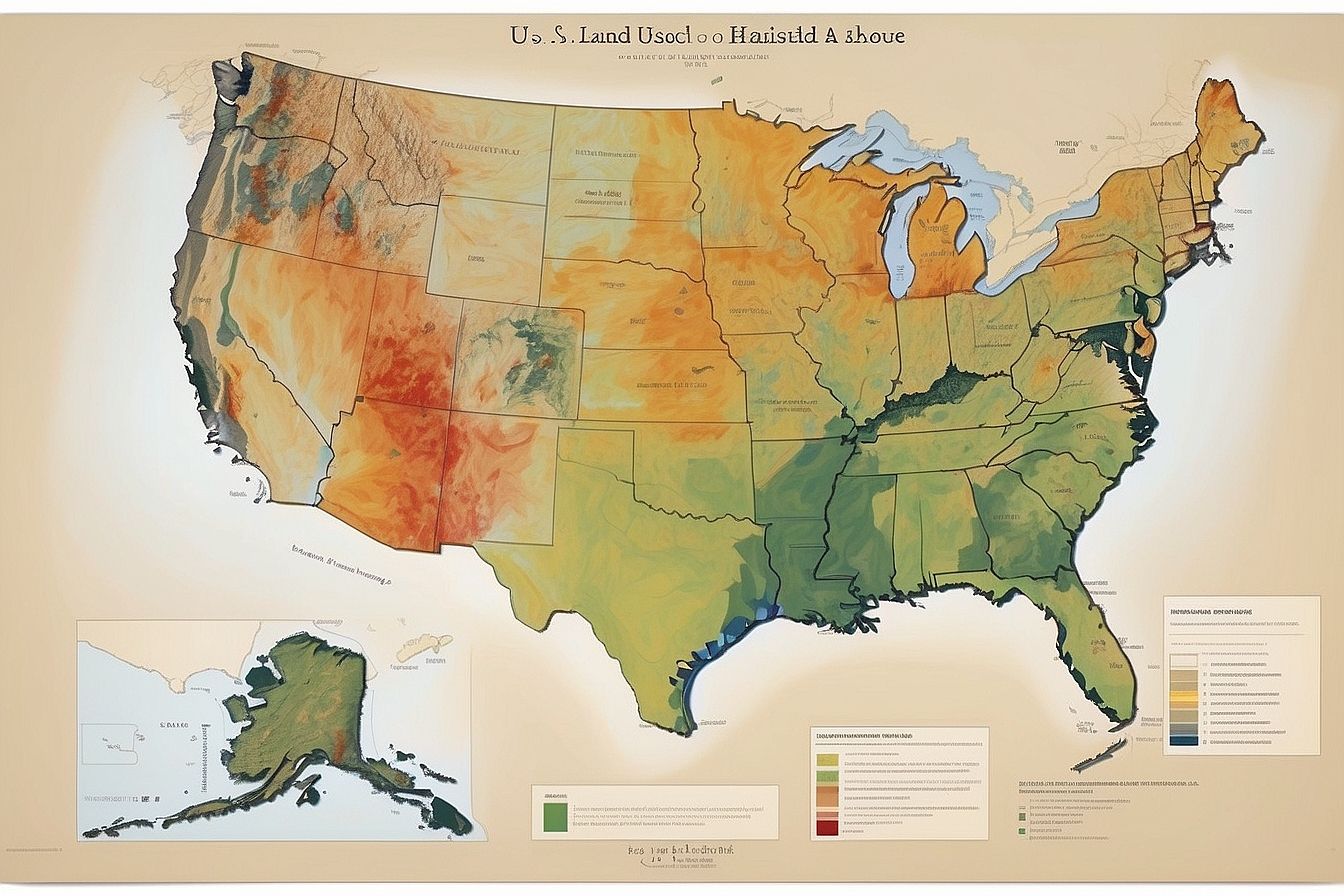As we traverse our varied landscapes, the remnants of contaminated lands serve as poignant reminders of the industrial misjudgements that litter our history. These brownfield sites are familiar to us, with an astonishing figure surpassing 450,000 in the US alone – each one a testament to environmental oversight.
Our forthcoming discussion promises to delve deep into the perils these sites pose while shedding light on progressive solutions. Journey with us as we uncover glimmers of hope amid this ecological adversity.
Key Takeaways
- Contaminated land sites, including abandoned mines and brownfield areas, threaten public health with risks such as groundwater contamination and exposure to harmful substances.
- Soil remediation methods like bioremediation and strategies involving community engagement are crucial for effectively addressing the negative impacts of these polluted sites.
- Agriculture plays a role in soil contamination through the use of chemicals that can harm ecosystems, highlighting the need for environmentally friendly farming practices.
- Biodiversity suffers from soil pollution as it leads to habitat destruction and loss of species; protecting environmental balance is essential.
- Innovative solutions and cross – sector collaboration are required to tackle emerging issues related to legacy pollution sites, ensuring safety for future generations.
Legacy Pollution Sites: An Environmental Hazard
Legacy pollution sites, such as abandoned mine lands and brownfield sites, pose significant environmental hazards, impacting public health and safety. Groundwater contamination, exposure to noxious gases, lead exposure, and industrial pollution are just a few examples of the risks associated with these contaminated land sites.
Definition of legacy pollution sites
Legacy pollution sites are places scarred by past industrial activities, where hazardous substances still linger. These could be abandoned factories, mine lands or any area once bustling with activity but now remain neglected with toxins like lead, causing soil and groundwater contamination.
Often they’re hidden dangers beneath our feet, posing silent threats to public health and the environment.
Superfund sites fall into this category as well—locations designated by authorities for cleanup because their levels of pollution are so severe. Dealing with these environments is not just about removing toxic chemicals; it’s a commitment to healing the scars left on nature’s landscape.
Our next discussion will focus on how these hazards affect public health and safety.
Impact on public health and safety
Moving on from the definition of legacy pollution sites, it is vital to understand the impact on public health and safety. Soil contamination and environmental pollution pose significant risks to human health, often resulting in long-term consequences for individuals living near these hazardous areas.
Exposure to NORM residues and other contaminants can lead to serious health issues, including respiratory problems, skin irritations, and even an increased risk of cancer. Additionally, abandoned mine lands and brownfield sites not only jeopardise public safety but also contribute to the degradation of surrounding ecosystems.
Addressing these hazards requires urgent action to protect both public health and environmental sustainability. Implementing effective soil remediation strategies at Superfund sites is crucial in mitigating the health risks associated with industrial contamination.
Examples of legacy pollution sites (abandoned mine lands, brownfield sites, etc.)
Legacy pollution sites come in various forms, each presenting unique environmental hazards. Here are some examples:
- Abandoned mine lands: These sites often contain hazardous materials such as heavy metals and toxic chemicals, which can leach into nearby water sources, contaminating the surrounding environment.
- Brownfield sites: Former industrial or commercial properties that may have been contaminated by hazardous waste, posing risks to public health and the ecosystem.
- Landfills: Areas where large quantities of waste have been buried can lead to soil and water contamination, affecting both human health and wildlife.
- Military installations: Previous military activities at these sites may have left behind pollutants such as explosives, fuels, and heavy metals, creating long-term environmental threats.
Addressing Legacy Pollution Sites
When it comes to addressing legacy pollution sites, clean-up strategies are crucial in mitigating the environmental and health impacts. Agriculture also plays a significant role in soil contamination, leading to emerging issues that need to be addressed urgently.
Clean-up strategies
- Soil Remediation: Employing methods such as bioremediation, phytoremediation, and soil vapour extraction to remove or neutralise contaminants in the soil.
- Groundwater Treatment: Utilising techniques like air stripping, carbon adsorption, and chemical precipitation to purify contaminated groundwater.
- Containment Measures: Constructing physical barriers or using impermeable liners to prevent the spread of pollutants from the site.
- Risk Assessment and Monitoring: Conducting regular assessments and monitoring activities to ensure the effectiveness of clean-up efforts and the safety of surrounding areas.
- Community Engagement: Involving local communities in clean-up initiatives to raise awareness and garner support for sustainable environmental conservation practices.
- Cross-sector Collaboration: Collaborating with government agencies, NGOs, and industry stakeholders to pool resources and expertise for comprehensive clean-up efforts.
- Long-term Management Plans: Developing and implementing long-term plans for monitoring, maintenance, and ongoing remediation activities to sustainably address legacy pollution sites.
Role of agriculture in soil contamination
Agriculture contributes to soil contamination through the use of pesticides, chemical fertilisers, and animal waste. These substances can leach into the ground, contaminating the soil and potentially impacting nearby water sources.
Additionally, agricultural activities produce airborne pollutants that settle on the land, further contributing to soil contamination. The widespread use of these practices in agriculture makes it a significant factor in soil pollution.
Furthermore, modern agricultural techniques have led to increased erosion and loss of topsoil, which reduces the land’s ability to filter out contaminants. Soil contamination from agriculture has far-reaching implications for environmental health and sustainability.
Effects on biodiversity and emerging issues
The presence of contaminants in the soil can have a devastating impact on biodiversity. It can lead to the decline or extinction of certain plant and animal species, disrupting the delicate balance of ecosystems.
As these contaminants spread, they pose emerging issues for both terrestrial and aquatic environments, affecting food chains and ultimately human health.
Contaminated land sites also give rise to emerging challenges such as phytoremediation resistance and the development of new persistent pollutants. These issues require innovative solutions as we strive to protect our environment and conserve biodiversity for future generations.
Conclusion
In conclusion, contaminated land sites pose a significant threat to the environment and public health. Addressing these legacy pollution sites requires comprehensive clean-up strategies and active involvement of various stakeholders.
The impact on biodiversity and emerging issues further highlight the urgency of tackling this environmental hazard. It’s imperative for us, as environmentally conscious individuals, to support conservation efforts and advocate for sustainable solutions to protect our natural surroundings.
FAQs
1. What is the legacy of contaminated land sites?
The legacy of contaminated land sites refers to areas that have been polluted by past industrial activities, leaving behind harmful substances in the soil or water.
2. Why is environmental cleanup important for these sites?
Environmental cleanup is crucial to remove pollutants from these lands, making them safe for future use and protecting local ecosystems and human health.
3. Can all contaminated land be cleaned up?
Not always; some heavily polluted sites may be too damaged for complete restoration but methods are available to reduce the risks they pose.
4. Who is responsible for cleaning up contaminated land sites?
Typically, it’s either the parties who caused the contamination or current landowners; however, government bodies sometimes intervene to manage environmental cleanup efforts when necessary.





